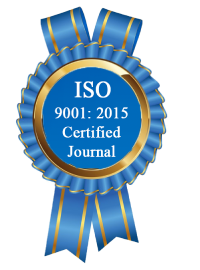| All | Since 2020 | |
| Citation | 172 | 110 |
| h-index | 7 | 5 |
| i10-index | 1 | 0 |
WJERT Citation 
Login
News & Updation
Abstract
MAXIMAL EFFICIENCIES IN -ALLOY JUNCTION SOLAR CELLS AT 300 K, ACCORDING TO HIGHEST HOT RESERVOIR TEMPERATURES, OBTAINED FROM CARNOT-EFICIENCY THEOREM. (VI)
Prof. Dr. Huynh Van Cong*
ABSTRACT
In -alloy junction solar cells at T=300 K,, by basing on the same physical model and the same treatment method, as those used in our recent works.[1,2] we will also investigate the maximal efficiencies, , obtained at the open circuit voltage according to highest hot reservoir temperatures, , obtained from the Carnot efficiency theorem, which was demonstrated by the use of the entropy law. In this word, some concluding remarks are given in the following. (1) In the heavily doped emitter region, the effective density of electrons (holes), , given in parabolic conduction (valence) bands, expressed as functionsof the total dense impurity density, , donor (acceptor)-radius, , and x-concentration, is defined in Eq. (9d), as: ), where is the Mott critical density in the metal-insulator transition, determined in Eq. (9a). Then, we have showed that (i) the origin of such the Mott’s criterium, Eq. (9a), is exactly obtained from the reduced effective Wigner-Seitz radius , characteristic of interactions, as that given in Equations (9b, 9c), and further (ii) is just the density of electrons (holes) localized in the exponential conduction (valence)-band tail (EBT) as that demonstrated in.[1] (2) In Table 3n, for alloy junction solar cell and for -radius, one obtains with increasing x=(0, 0.5, 1): = 32.83 %, 31.96 %, 31.15 %, according to at , respectively. (3) In Table 5p, for alloy junction solar cell and for -radius, with increasing x=(0, 0.5, 1), one obtains with increasing x=(0, 0.5, 1): = 32.51 %, 32.51 %, 33.07 %, according to at , respectively, suggesting that such -and- variations depend on . (4) Finally, as discussed in above remarks (2) and (3), for x=1, the alloy becomes the GaAs-one, and therefore, =31.15 % and =33.07 %, which can be compared with the corresponding results obtained by Moon et al.[6] and Green et al.[4] for the single-junction GaAs thin-film solar cell, 22.08 % and 29.71 %, respectively, suggesting that in order to obtain the highest efficiencies, the -alloy junction solar cells could be chosen rather than the crystalline GaAs-junction solar cell.
[Full Text Article] [Download Certificate]
